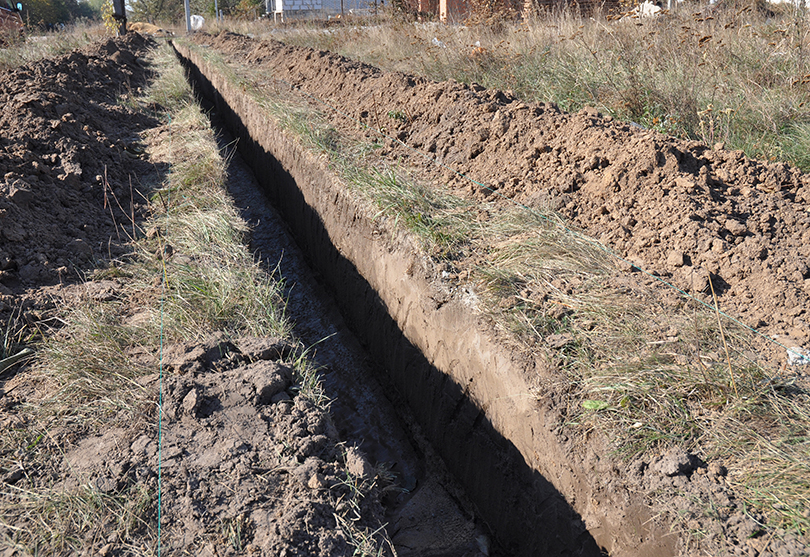
Hydro excavation is a non-mechanical, non-destructive, cost-effective, and environmentally friendly process that utilizes the combination of pressurized water, and an industrial strength vacuum to both excavate and remove soil in a synchronized manner. In essence, hydro excavation uses water to break up soil, and a vacuum to immediately remove the soil and water. For example, as the pressurized water safely breaks up the soil, the soil and water slurry is vacuumed through a hose where it then enters into a portable debris tank.
Since hydro excavation does not use traditional digging equipment that consists of sharp metal edges that dig into the ground, there is little to zero risk of damaging underground utilities. This fact makes hydro excavation the preferred method for utility exposure and location applications. Hydro excavation can be performed remotely, or away from the equipment truck, which means it is the best method when excavating in tight areas. In addition, hydro excavation does not disturb soil that is located around the immediate excavation site.
The result is a safer, faster, more precise, and far more cost effective excavation method that requires significantly less backfill, reduces labor, and has less of a negative impact on the environment. The following information will provide you with the best applications for hydro excavation.
Hydro Excavation Is Perfect For Slot Trenching
Slot trenching is the process of excavating narrow trenches that are used for the installation of cables, pipes, and other utilities that are buried underground. Hydro excavation is the best way to slot trench due to the fact that the method is fast, efficient, and non-destructive even when the ground is frozen. In essence, it makes utility installation achievable on a year round basis in colder climates such as New England. Both the accuracy and precision of hydro excavation make it the perfect method for digging the narrow trenches that are required for utility installation.
In addition, hydro excavation does not disrupt the soil that surrounds these narrow trenches, which all but removes the risk of costly damage that may be caused by traditional slot trenching methods. Hydro excavation is ideal for digging slot trenches through easements and right-of-ways due to the fact that this high-tech method does not damage existing underground utilities, surrounding soil, or the structure of the trench system. In addition, hydro excavation is perfect for digging slot trenches that are used to install irrigation and sprinkler systems since the method does minimal damage to existing landscaping.
Hydro Excavation Is Perfect For Locating And Exposing Existing Utilities
The safest and most efficient method of exposing underground utilities is you guessed it, hydro excavation. Since the method utilizes water to break soil and a vacuum to remove the soil and water, it significantly reduces the risk of damaging utilities that are buried underground. Making use of hydro excavation to both locate and expose utilities, also referred to as potholing or daylighting, ensures that the existing utilities remain intact, and the earth surrounding the utilities is undisturbed. Traditional excavation methods can be extremely dangerous in situations where utility lines are poorly marked, or not marked at all.
Heavy machinery, and even hand digging can cause a significant amount of damage. The good news is that the hydro excavation method locates and exposes utility lines in the fastest and safest manner possible. Pipes can be installed parallel or across existing utility lines when utilizing a hydro excavated slot trench. Hydro excavation also provides contractors with the ability to make repairs to existing utility lines without the concerns for safety or service interruption….
To Be Continued Next Week
Jolin Paving & Excavating, Inc. is your New England connection for hydro excavation services. Our company has been serving Boston Massachusetts, Southern NH, VT & ME as well as Northern CT & RI since 1952. Please Contact us to learn more today.
continue reading






